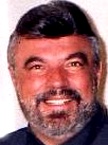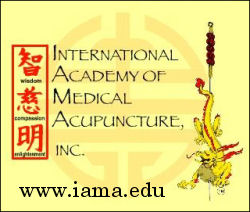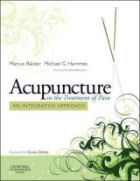Acupuncture & TCM Articles

Acupuncture Articles
by John A. Amaro L.Ac., Dipl.Ac.(NCCAOM), DC
 Dr. Amaro is an internationally known author, lecturer and practitioner beginning his practice of Acupuncture and Chiropractic in 1971. He has led 13 diplomatic Acupuncture study tours of The People's Republic of China escorting more than 500 doctors and practitioners. He has personally studied Acupuncture in nine separate Asian nations. Dr. Amaro is an internationally known author, lecturer and practitioner beginning his practice of Acupuncture and Chiropractic in 1971. He has led 13 diplomatic Acupuncture study tours of The People's Republic of China escorting more than 500 doctors and practitioners. He has personally studied Acupuncture in nine separate Asian nations.
He has received Certification in Acupuncture through the Columbia Institute of Chiropractic in 1973. This was one of the first Acupuncture postgraduate education programs for physicians in North America commencing in 1972.
He has been certified by the Waseda Acupuncture College in Tokyo, Japan in 1974 and graduated from the Chinese Medical Institute, Kowloon, China in 1976. He had previously taken postgraduate studies at the Tai Chung Medical School Taipei, China 1973.
Meridian Therapy -- Pain Management
John A. Amaro L.Ac., Dipl.Ac.(NCCAOM), DC
Chiropractors, as you well know, are incredibly effective in assisting a multitude of problems through adjustment of the vertebral subluxation. But how many times has a patient with a chiropractic correctable personal injury, musculoskeletal or visceral problem, discontinued care in the early stages of treatment and sought medical attention due to the presence of pain or slow progress before chiropractic care could be of benefit?
The patients who fail to return to chiropractic care, having "tried it and it didn't help," affect us professionally and financially. If we could only ease their pain and speed their progress in the early treatments.
Perhaps the number one reason why John Q. Public seeks chiropractic care is because of the presence of pain. In our almost 100 years of health care service, chiropractic has established a semisolid reputation with the general public for our success with back pain. Unfortunately, the public at large does not realize how very versatile we are with a variety of pain syndromes which affect every major and minor joint, as well as dysfunction to the viscera.
The average patient with pain has only one goal: to be rid of the misery. It is so easy for us to tell the patient to "be patient" while the condition heals. However, this is difficult for the suffering patient when they have visited our offices four or five times, and even though they are improving clinically, have not seen a positive response in their pain relief. It is very frustrating for both the patient and the doctor when we fail to see improvement in pain despite our efforts with chiropractic care and possibly physiotherapy.
We know from experience that if the patient would just follow through, the chiropractic care will be effective and bring the case to a successful resolution. But the patient, frustrated, seeks the help of his medical physician who prescribes anti-inflammatory drugs, muscle relaxants or pain medication, directs the patient to see the physical therapist, and advises against the continued use of chiropractic care.

Acupuncture in the
Treatment of Pain
This scenario happens far too often throughout the chiropractic profession and may be one of the easiest situations to avoid, especially if the practitioner is armed with the knowledge of specific reflex points on the body, which have certain pain relieving qualities.
For example: The meridian therapy points known as KI 2, SP 2, GB 39, GB 25, BL 23, and a point between the spinous of cervical 2 and 3 is extremely effective in creating a quick boost of cortisone production. BL 1, SI 3, and BL 62 are very effective as well in stimulation of cortisone production.
Very few in the profession realize the significance of stimulation of one or more special points which deal specifically with musculoskeletal, ligamento and tendino problems. These points are: ST 3, GB 13, GB 22, and CV 3.
One of my articles in Dynamic Chiropractic, "The Tricks of the Trade" specifically pointed out the impact of stimulation of scar tissue. This article brought numerous reports of a positive response throughout the United States and several other countries.
The points KI 1, GV 26, BL 60, LI 20, LI 4, are very special meridian therapy points which, in my opinion, are some of the most potent pain relieving points on the body.
When inflammation is the factor, HT 3, P 3, LU 5, SP 9, LIV 8, and KI 10 are incredibly significant points for any pain which traverses over the named meridian. These represent the water points on the yin meridians and are especially effective.
Likewise, GB 43, ST 44, BL 66, LI 2, TH 2, and SI 2 are the water points of the yang meridians which have a miraculous response as in the yin meridians in dousing the fire of inflammation.
GB 34 is the master control point for the entire lower extremity and LI 4 and TH 5 have a similar effect for the upper extremity.
LIV 2 and 3 have a very strong effect in relaxing skeletal muscle throughout the body; BL 54 is primary for relaxing the musculature of the low back, especially when coupled with BL 57.
For cervical muscle spasm, the combined points of SI 12, TH 15 and GB 21 have little equal in relaxing spastic muscle spasms. Of course one should not forget SI 3, LI 4, and LI 11.
In chronic (or acute) intractable pain try KI 1. LI 20 is connected with the pituitary gland for endorphin and enkephalin production.
In past articles in Dynamic Chiropractic I've discussed auriculotherapy, those special reflex points on the ear which are so very powerful in relieving pain and addressing symptomatic response of a particular area. My articles have also dealt with Korean hand acupuncture, which has an incredible effect in dealing with pain. Remember, the distal interphalangeal joints deal specifically with those problems of the ankle and wrist; the proximal interphalangeal joints deal with the elbow and knee; and the large knuckles deal with the shoulder and hip. Only one hand is necessary to stimulate: the index and ring finger deal with the upper extremity, and the thumb and small finger deal with the lower extremity.
To affect the head in Korean hand acupuncture, one focuses on the tip of the middle finger. The face corresponds to the finger pad. To affect the spine, one deals with the dorsal aspect of the hand, straight down from the middle finger.
It must be remembered that meridian therapy is not acupuncture unless the acupuncture needle is used to stimulate the points. Meridian therapy is the knowledge of certain specific reflex points which are not necessarily Chinese in origin and may be stimulated with any modality to include simple finger pressure.
Ultrasound relies heavily on meridian therapy points when we use it to "surround the dragon" over the area of involvement. It may very well be one of the most significant forms of pain control and is easy to use by anyone.
Meridian therapy may be used by anyone and provides predictable results. It is within the scope of our practice as it does not pierce the skin. Keep in mind, however, that the same points the acupuncturist uses are the same points that are used in meridian therapy which may correspond to the same point which the chiropractic pioneers used in reflex therapy. In fact, if you were to investigate, you would find that to be the case.
Learn meridian therapy and increase your clinical effectiveness. It does not replace chiropractic care for the orthopedic, osseous and soft tissue problems, but enhances the effect of chiropractic marvelously.
Japanese Acupuncture Theory, Meridian Therapy Books
Japanese Classical Acupuncture: Introduction to Meridian Therapy, Traditional Japanese Acupuncture .
| 